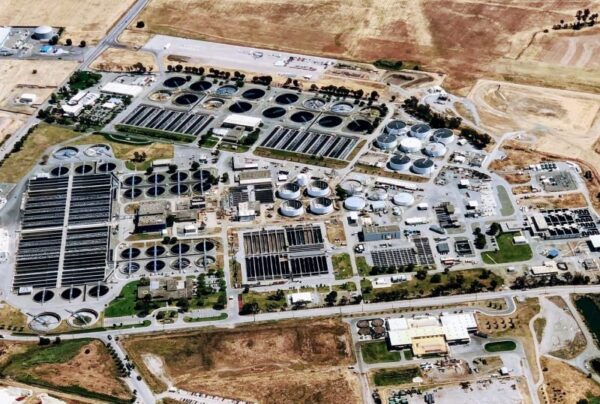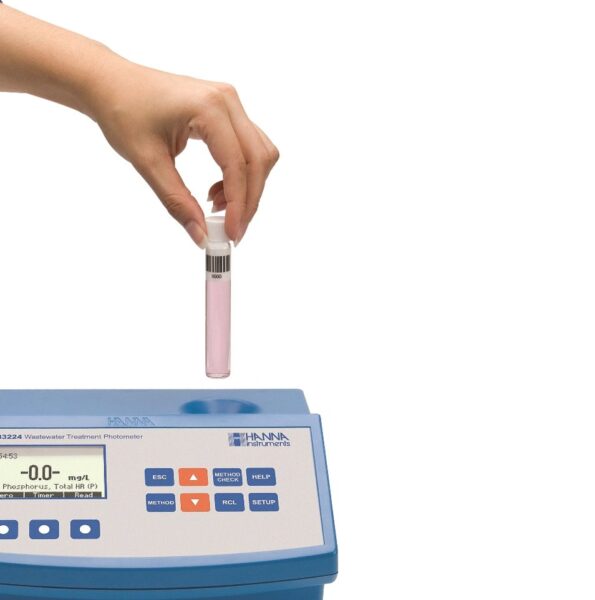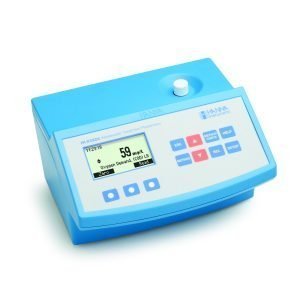“W. H. Auden once noted, “Thousands have lived without love, not one without water.” Yet while we all know water is crucial for life, we trash it anyway. Some 80 percent of the world’s wastewater is dumped—largely untreated—back into the environment, polluting rivers, lakes, and oceans.”
More than 80 percent of the world’s wastewater flows back into the environment without being treated or reused, according to the United Nations; in some least-developed countries, the figure tops 95 percent.
EPA estimates that about 850 billion gallons of untreated wastewater and storm water are released as CSO each year in the United States only.
Industry development, exponential population growth as well increasing production significantly affect the increase in quantity wastes that are discharged directly or indirectly into natural water systems. Depending on the size of the receptor capacity of individual receivers, it takes some time in order to observe possible disturbances of the natural biological balances of parts of water systems. Severely disturbed parts of the natural environment, especially water, soon become unusable for many purposes. To protect quality of natural water systems, municipal wastewater before releases to the environment must meet certain conditions qualities.
How could wastewater be satisfactorily purified and discharged into receivers, it is necessary to analyze the effectiveness of purification and act in an appropriate manner. Analyzing the efficiency of purification means examining physical, chemical and biological indicators, water quality at the inlet and outlet of the purifier. For the purpose of monitoring, physico-chemical indicators of wastewater quality (chemical oxygen demand (COD), biochemical oxygen demand (BOD), concentration of suspended solids, total phosphorus and total nitrogen) are analyzed.
Chemical oxygen demand (COD) is a critical waste treatment measurement in everything from municipal systems to food manufacturing waste streams.
Performing COD tests the right way is important in determining wastewater treatment effectiveness and can help diagnose any problems in treatment. The COD method is also used in applications in power plants, chemical industry, paper industry, laundries, environmental studies and general education . The efficiency of the treatment process is normally expressed as a percentage of oxidizable matter purified during the cycle.
In water purification plants, COD values must be less than 10 mg/l O2 at the end of the treatment cycle.

What is Chemical Oxygen Demand?
The Chemical Oxygen Demand (COD) is defined as any substance, both organic and inorganic, capable of being oxidized by a strong oxidant . The amount of oxidant consumed is expressed in terms of its oxygen equivalence. COD is expressed in mg / l O2. Due to its unique chemical properties, the dichromate ion (Cr2O72-) is the specified oxidant in most cases. In these tests, Cr2O72- is reduced to chromic ion (Cr3 +).
As mentioned, both the organic and inorganic constituents of the sample are subject to oxidation. However, the organic component predominates and is of greater interest. The COD is a defined test, both the digestion time and the strength of the reagent and the COD concentration of the sample affect the degree of oxidation of the sample .
The COD test is normally combined with other important tests to corroborate the effectiveness of the treatment plant.
There is a generally accepted classification of wastewater ordered by its Oxygen Demand, which is measured either by the Biological method (BOD) or the COD method .
Significance: eutrophication prevention
As gauges of organic matter in a sample, BOD and COD are critical in wastewater for determining the amount of waste in the water. Waste that’s high in organic matter requires treatment to reduce the amount of organic waste before discharging into receiving waters.
If water treatment facilities do not reduce the organic content of wastewater before it reaches natural waters, microbes in the receiving water will consume the organic matter.
As a result, these microbes will also consume the oxygen in the receiving water as part of the breakdown of organic waste. This oxygen depletion along with nutrient rich conditions is called eutrophication, a condition of natural water that can lead to the death of animal life.
Wastewater facilities reduce COD and BOD by using these same microbes under controlled conditions. These facilities aerate chambers injected with specialized bacteria that can break down the organic matter in an environment that does not harm natural waters.

COD can be measured by titrimetic and photometric methods.
In the past potassium permanganate was widely used as an oxidant, but it was found to be inconsistent in its ability to oxidize all the organic matter with a wide variety of waste samples.
Today, most of the COD tests available use potassium dichromate as the oxidant. Potassium dichromate is a very strong oxidant and has a power of oxidating between 95-100% of organic material.
Digestion is performed on the samples with a set amount of the oxidant, sulfuric acid, and heat (150°C). Metal salts are usually included to suppress any interferences and to catalyze the digestion. The digestion typically takes two hours to perform.
During the digestion, it’s necessary to have excess oxidant; this ensures complete oxidation of the sample. As a result, it’s important to determine the quantity of excess oxidant. The two most common methods for this are titration and colorimetry.
COD – measured by titration
A sample is retained in a strongly acidic solution with a known excess of potassium dichromate (K2Cr2O7). After digestion, the remaining unreduced K2Cr2O7 is titrated with ferrous ammonium sulfate to determine the amount of K2Cr2O7 consumed and the oxidizable matter is calculated in terms of oxygen equivalent. This procedure is applied to COD values between 40 and 400 mg / l.
Higher COD values can be obtained by careful dilution or by using higher concentrations of Dichromate Digestion Solution


You can quantify the amount of trivalent chromium in a sample after digestion by measuring the absorbance of the sample at a wavelength of 600 nm in a photometer or spectrophotometer. Alternatively, the absorbance of hexavalent chromium at 420 nm can be used to determine the amount of excess chromium at the end of digestion to determine COD values. When a sample is digested, the COD material in that sample is oxidized by the dichromate ion. As a result, Chromium goes from hexavalent (VI) to trivalent (III). Both Chromium species exhibit color and absorb light in the visible region of the spectrum. In the 400 nm region the dichromate ion (Cr2O72-) absorbs much light while the chromic ion (Cr3 +) absorbs much less. In the 600 nm region, it is the chromic ion that absorbs a lot and the dichromate ion has practically zero absorption.
This method is easy and requires just a few simple steps.
- Digest your samples and a reagent blank. (The reagent blank is just a sample of deionized water that’s treated the same as your actual samples. You can even reuse the blank for as long as your reagent batch lasts.)
- Let the digested samples and blank cool.
- Zero the instrument using the blank vial.
- Read the samples.
HANNA pre-programmed methods cover the ranges from 0 to 15000 mg/l O2:
- LR: 0-150 mg / l approx. 420 nm
- MR: 0-1000 (1500) mg / l approx. 600 nm
- HR: 0-15000 mg / l approx. 600 nm
Which method will you choose?
Both titrimetric and photometric methods have their own advantages and disadvantages.
Titration is less equipment-intensive since the only equipment you need is a titrator, heating block, and digestion vials. However, the procedure is a little more labor-intensive. An automatic titrator can reduce the amount of user input required and can be used for other applications in wastewater (e.g. alkalinity, volatile acidity)
Although colorimetry requires a spectrophotometer or photometer, it offers the convenience since most manufacturers offer premixed reagents, so all you need to do is run your samples with the digestion chemicals and minimal contact.
Colorimetry also makes measurement easy since all the analyst needs to do is digest the samples and let the instrument do the work. For these reasons, colorimetry is the most common method to measure COD.
HANNA has it totally covered!
Option A:
Photometer/Spectrophotometer + COD Reactor + Reagents
Option B:
AP Titrator + COD reactor + reagents
- Digestion heating block / COD Reactor
Both methods for COD testing require the digestion step, so a heating block for your samples is crucial for ensuring accurate and repeatable results. For best results, look for a heating block that features multiple temperatures so you have utility for other tests, such as total phosphorus. Most heating blocks also have timers, which are critical for keeping digestion times consistent over multiple runs.
For added safety, look for models that have an optional shield that covers the heating block in case of an accident.

The HI839800 COD Test Tube Heater is an easy to use thermoreactor constructed of durable materials. The aluminum block incorporates a 25 vial capacity and a well for a reference temperature probe. It’s well-marked user interface provides intuitive operation, equipped with two arrows to set the built-in timer and a temperature button with two predefined temperature settings: 150ºC and 105ºC. Additional features include status indicator lights, a thermal fuse to prevent overheating, and continuous LCD display.
- Titrator, Photometer OR spectrophotometer
The photometer or spectrophotometer is the device that is going to read the absorbance of the samples after digestion in order to correlate it with the COD concentration.
Regardless of which instrument you choose, look for models that feature preprogrammed methods for COD for ease-of-use.
HANNA top picks are:
HI932 The HI932 Advanced Automatic Titrator is the answer to your advanced titration needs. Fully customizable to meet your testing needs, the HI932 delivers accurate results and intuitive user experience, all in a compact package. Titrate for a variety of published methods at the push of a button, as well as perform direct measurements and back titrations for complex samples. For those that require greater automation, pair your HI932 with the HI922 Autosampler for the most accurate results with the least amount of effort.


The HI801 iris is a sleek and intuitive spectrophotometer that allows for measurement of all wavelengths of visible light.
Customize your methods, take a wide range of measurements, and feel confident in your testing accuracy with iris.
The convenience of pre-programmed methods with the option to expand.
iris comes pre-programmed with more than 80 commonly used chemical analysis methods to help you get started. Simply update these methods by connecting to a computer or flash drive.

The HI83224 COD Meter and Multiparameter Photometer for chemical oxygen demand (COD) and specific ion measurement combines accuracy and ease of use in an ergonomic benchtop design. This meter is one of the most versatile photometers in the market, offering 15 measurement methods for different parameters including COD using ready-made liquid or powder reagents. The HI83224 has many advanced features including barcode recognition of sample vials, a graphic LCD to display various chemical forms, and a step-by-step tutorial mode for inexperienced users.

HI83314 is a compact, multiparameter photometer for measuring key water and wastewater quality parameters. The meter is one of the most advanced photometers available with an innovative optical design that utilizes a reference detector and focusing lens to eliminate errors from changes in the light source and from imperfections in the glass cuvette. 10 key water and wastewater quality parameters with 20 different methods covering multiple ranges are programmed into the meter. Wastewater treatment digestion parameters include COD, Total Nitrogen and Total Phosphorous, which are important for monitoring nutrient removal. The HI83314 also offers an absorbance measurement mode for performance verification and for users that would like to develop their own concentration versus absorbance curves. To save valuable laboratory benchtop space, the HI83314 doubles as a professional pH meter with its digital pH/temperature electrode input. Now one meter can be used for both photometric and pH measurements.
- COD Pre-prepared reagents

Reagents are one of the most important components of the COD testing system. These chemicals are responsible for oxidizing the organic material. These COD vials are premixed and ready to use.
There are several types of reagents available commercially:
- EPA-compliant reagents: These vials comply with EPA method 410.4 and Standard Methods 5220D. These reagents use the formulation of this method, which contains mercury sulfate, potassium dichromate, and sulfuric acid. Choose these vials if your work requires you to report COD results to a regulatory agency requiring EPA methodologies.
- ISO-compliant reagents: Conform to ISO 15705:2002 methods with respect to their composition. These compositions of these COD vials are similar to that of EPA standards, so they also contain mercury.
- Mercury-free reagents: Most COD vials contain mercury sulfate to remove chloride interferences, which would otherwise create a falsely high COD value. COD-free vials do not contain mercury, which makes them more susceptible to chloride interferences, but greatly reduce the safety and environmental risks of handling mercury. As a result, these reagents are ideal for routine analysis where no or very low chloride concentrations are expected.
Author: Nives Vinceković Budor, mag.ing.chem.ing.
Sources:



